When asked what people think of Karimov, and why it seems like he is already old news, an Uzbek friend of mine told me that the “old king is dead, and now all hail the new king.” This blunt comment made me think about Uzbek politics more than I did up until that point. Despite not knowing much about it, the two names that immediately comes to my mind are Uzbekistan’s late president Islam Karimov, and the good old Tamerlane, also known as Timur in this part of the world, whose feats are often owned by the modern Uzbek state. Can we not say that, in a way, Timur and Karimov fought to be the ‘true’ leader of the Uzbek people after the founding of the republic in 1991, and that apparently it is now Shavkat Mirziyoyev who seems to share the limelight with one of the greatest conquerors known to humankind? With these questions in my mind, and no clear answers around, I wanted to pen down this short article to illustrate a more interesting yet lesser-known topic about Uzbekistan, its entanglements with personality cults.
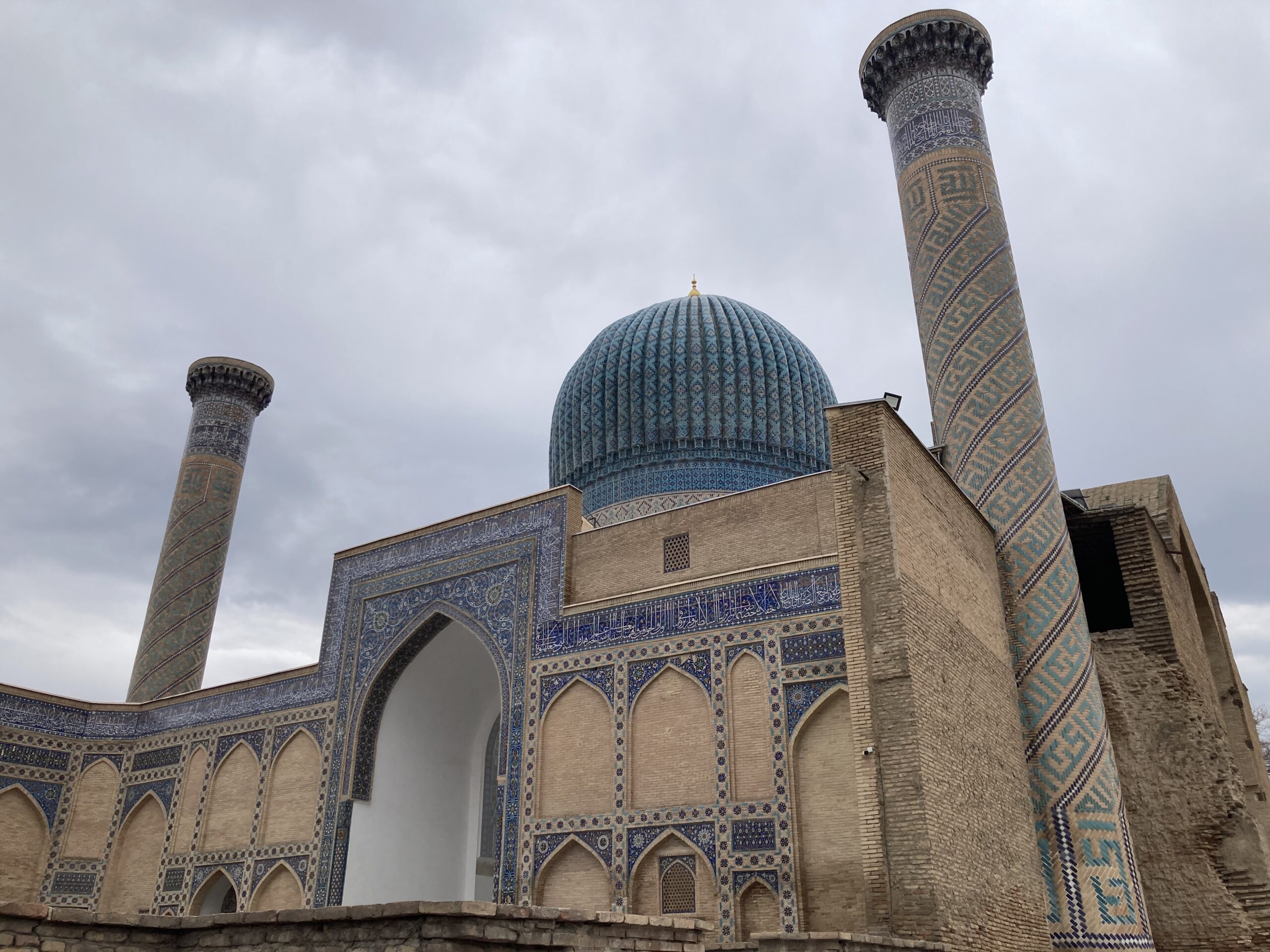
Perhaps one of the most visited places in all of Samarkand, a city known for its extensive touristic destinations, is the Amir Temur Mausoleum, also known as the Gur-i Amir Complex. Though the Uzbek government did all it could do to practically destroy Shahrisabz, where Timur was born, thankfully his tomb is safe for the time being.
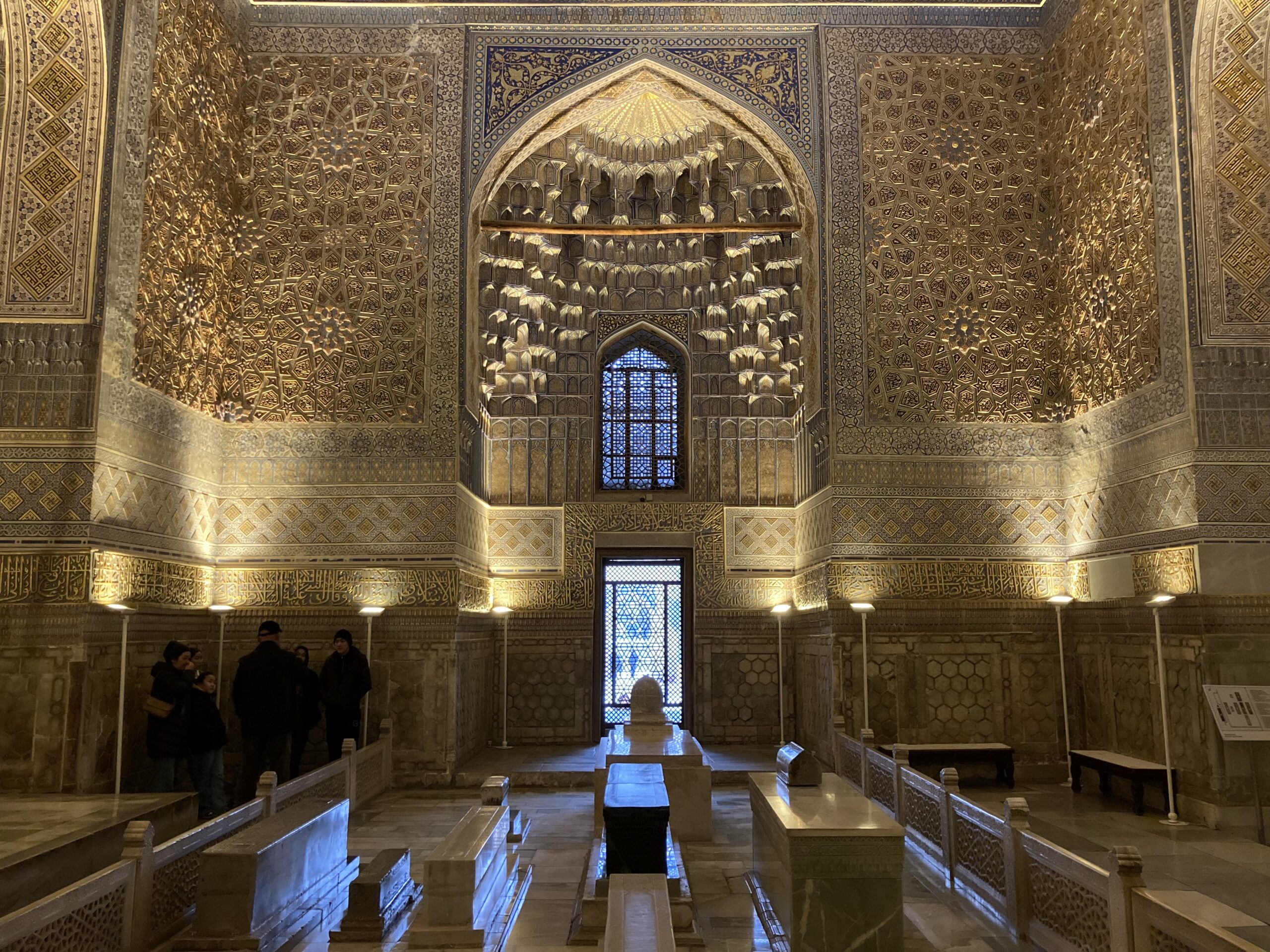
It is an incredible mausoleum, though I did not expect anything less for the man. He is buried right in the middle, in the only black tomb found there amidst many family members. Even in December, this place gave me trouble taking photos of it without getting some people in the shot.
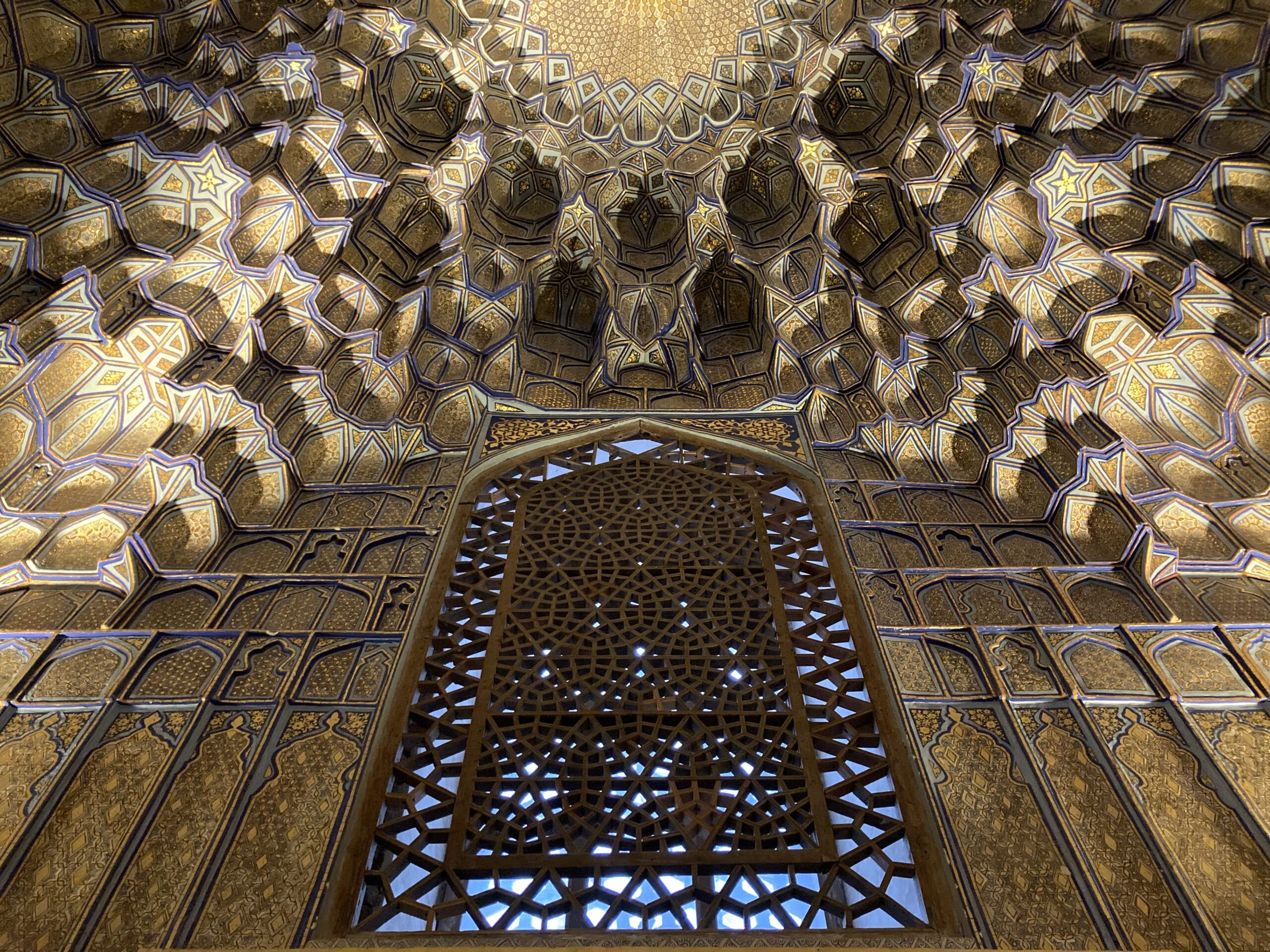
Other than the obvious reason to visit it, the tomb itself, many seemed to be attracted to its incredible interior design. It resonated power, even today, and I refuse to think that this is not desired by the government to a certain degree. Locals seemed all too fond of Timur, and how he was their ancestor. Names like Karimov and Mirziyoyev have an impact on their lives today, and are influential in everyday life, or were, but Timur seems to be the one that brings people together in a different way. I mean, anyone from the Tajik taxi drivers of Bukhara to locals of Samarkand, and even the Russians residing in Tashkent seem to have only good things to say about the man, and that they are proud to have his birth and death place in their own country. Given how there are no current controversies about Timur that can actually impact their lives, I guess this attitude is only normal.
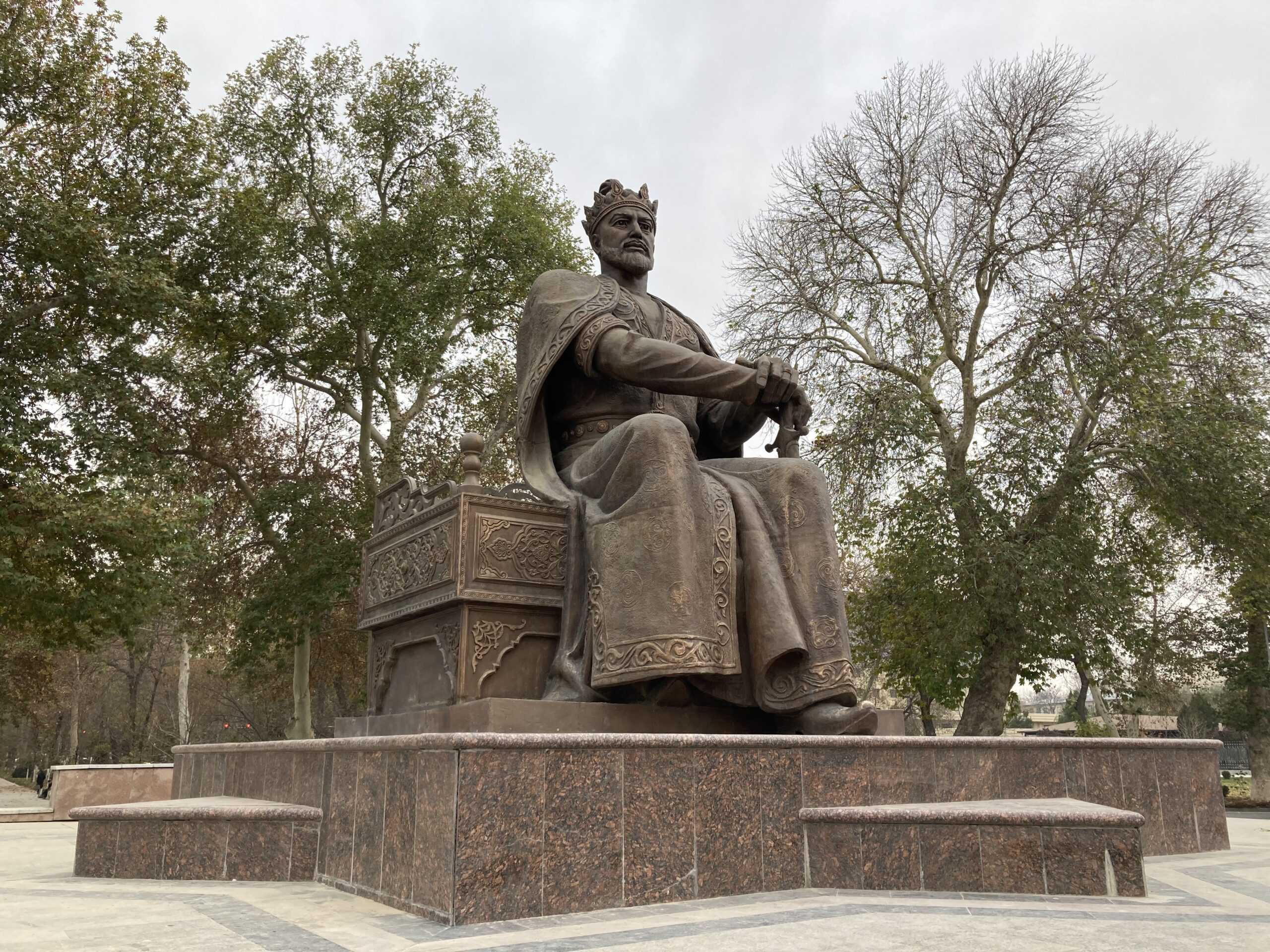
Timur, the 14th century conqueror of a vast empire named after himself, has these statues and sculptures of him all around Uzbekistan, apparently some even found their way to smaller villages and towns. Of course, this one in Samarkand, near his mausoleum, is still some of the biggest.
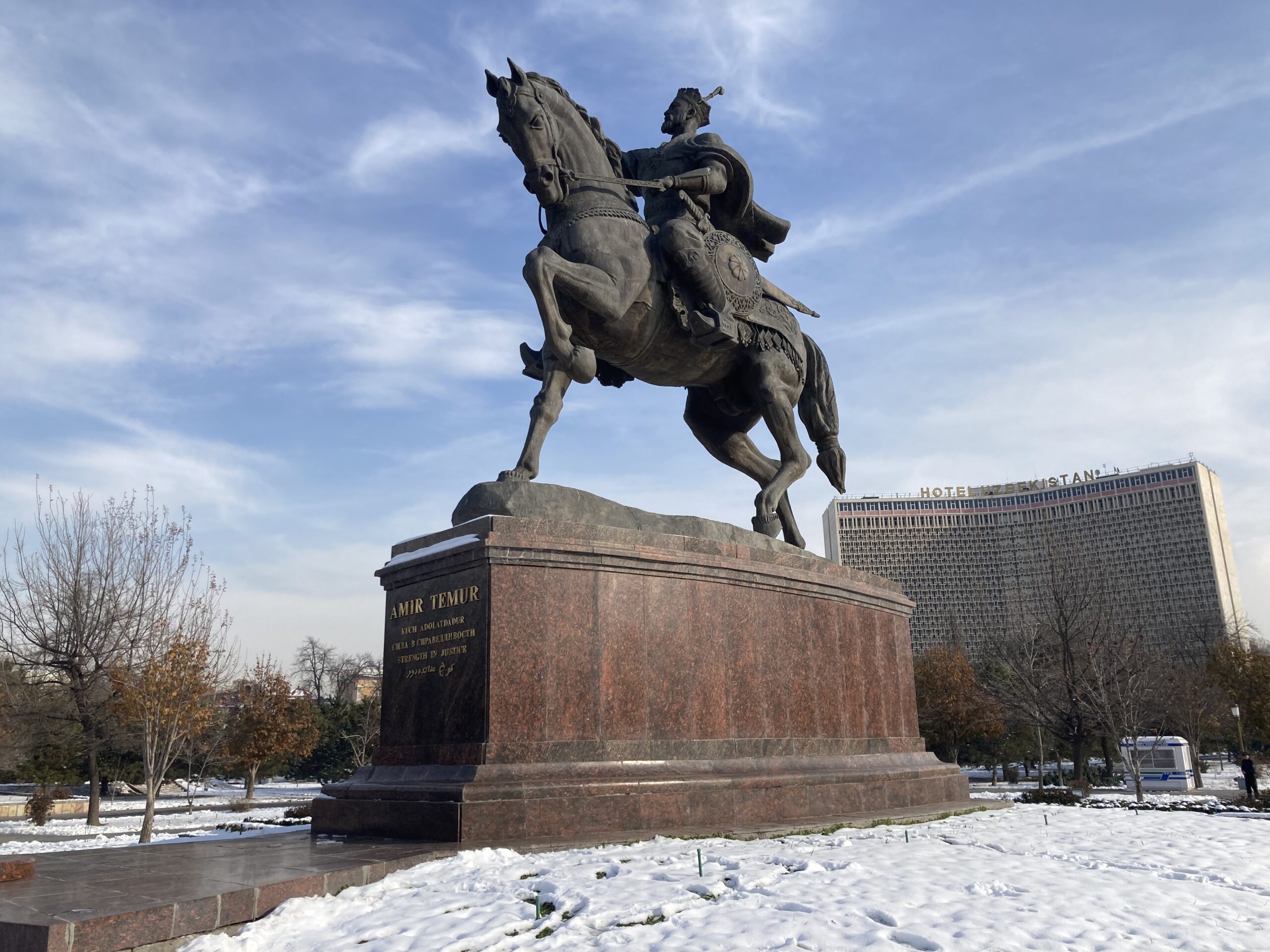
However, Timur’s heritage today, or should I say his everlasting influence, is not limited to where he once ruled, and died. His massive statue in the middle of Tashkent, which replaced an earlier Soviet monument found there, is a testament to the true power he holds over modern-day Uzbek polity. He is the centrepiece of Tashkent, the capital of the country. Where Ataturk would stand in Ankara, and Alexander Nevsky in Nizhny Novgorod, Timur stands proudly in the center of modern Uzbek capital. He looks at something interesting as well.
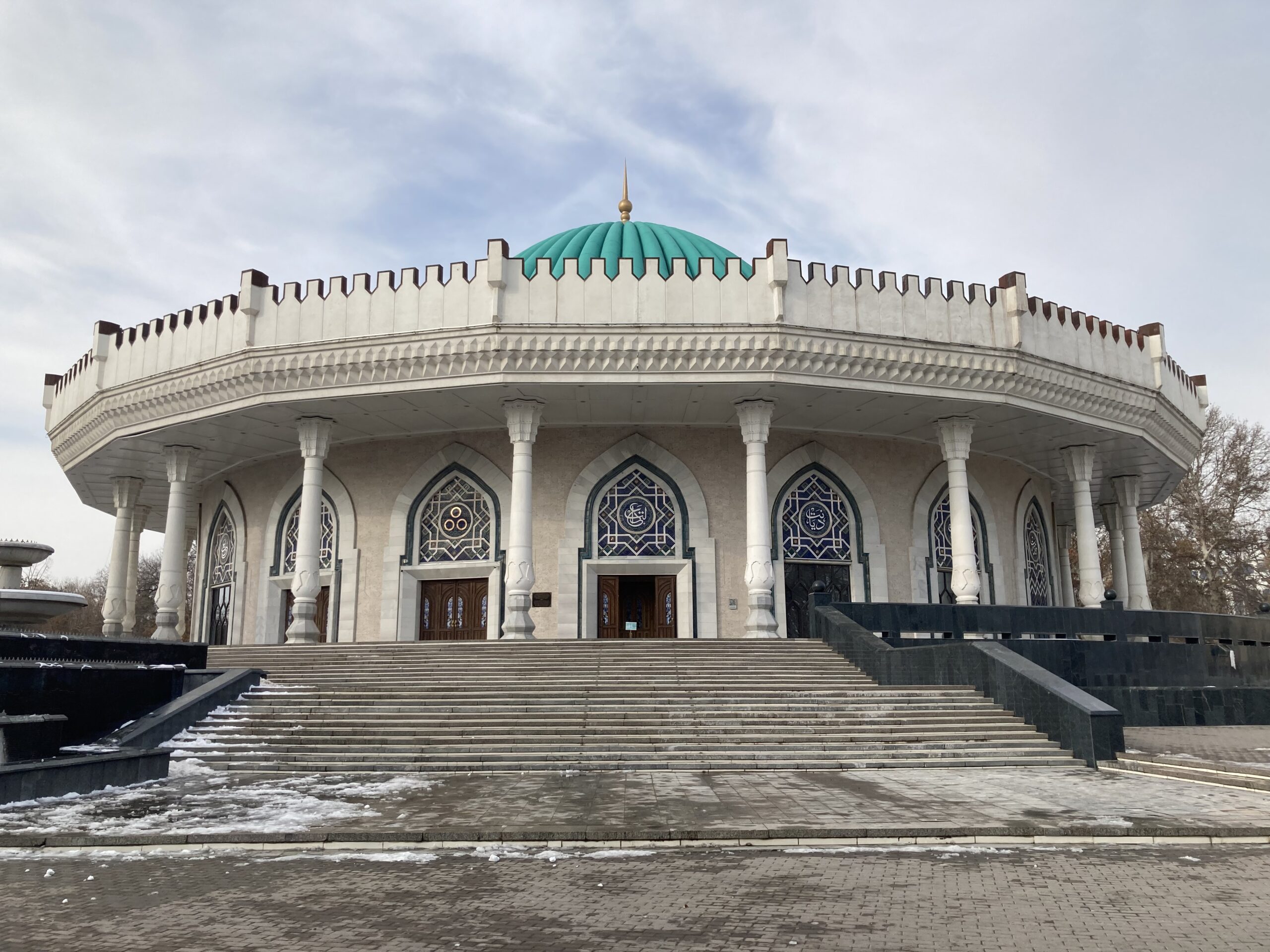
That thing is a museum dedicated to his empire and himself, which, with its central location and outstanding architecture also stands out as one of the top museums in town, if not the most important one.
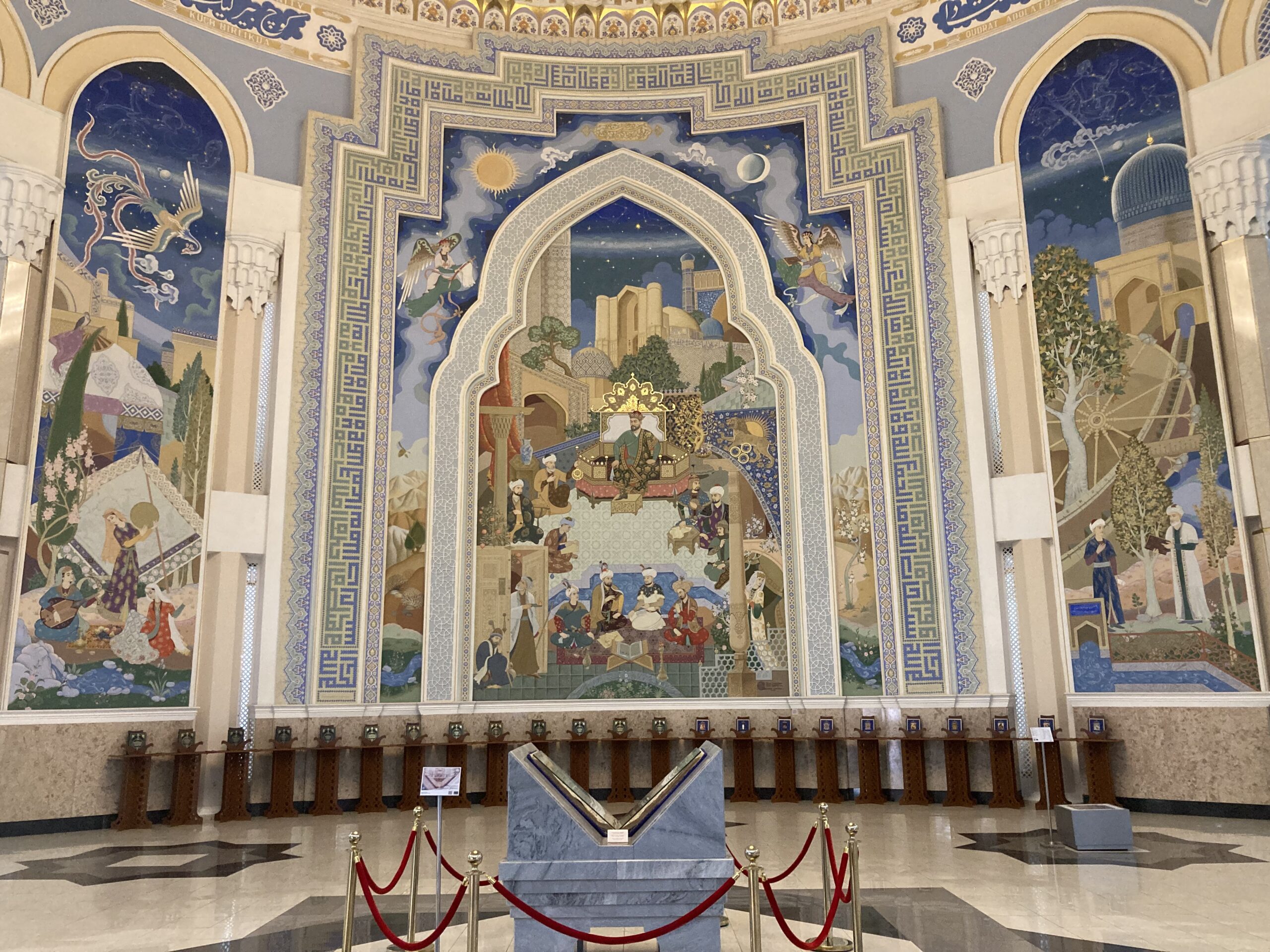
There are some miniatures and mosaics depicting feats of Timur, and Timur himself inside the museum. It is pretty small, but very well designed. Best of all, it has a lot written in English, and there seem to be some extras for those using an AR application on their phones. I did not bother, but it was an excellent experience nonetheless.
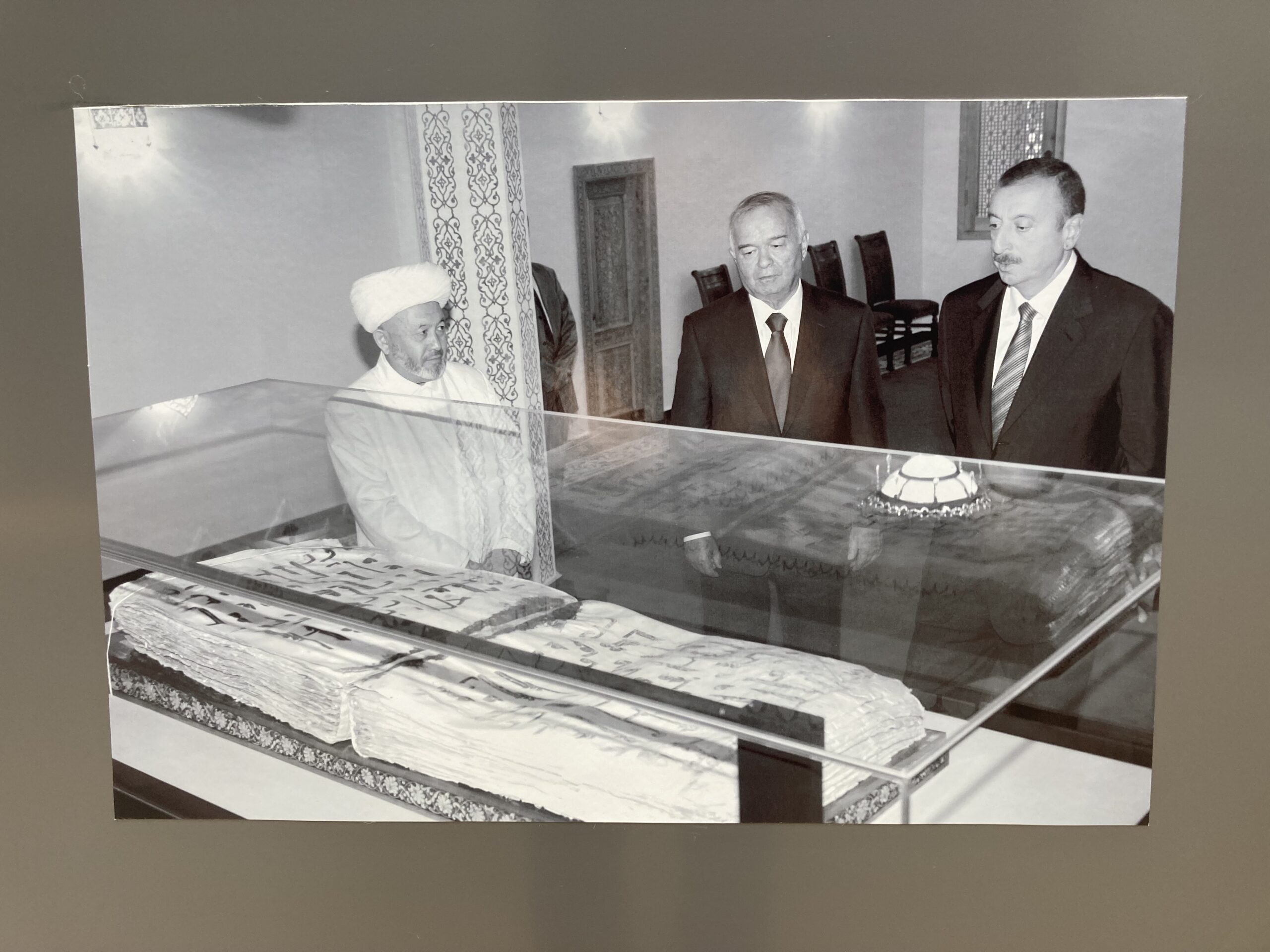
Of course, it is not just Tamerlane that got a museum of his own, oh no, Islam Karimov has one too, and it is directly dedicated to him and him alone. A lot of helpful staff is on duty here, and they can talk many languages, including Turkish. In order to spare me the propaganda, I made sure to be allowed to visit the premises freely, which was also free to enter mind you, a rarity in this country as even some religious destinations where pilgrims frequent charge you a few USD to enter. The museum has two parts, one with photos of Karimov that always show him in the best light, where you can find him and Aliyev enjoying an unobstructed view of the Samarkand Kufic Quran, which is not possible for us normal travellers.
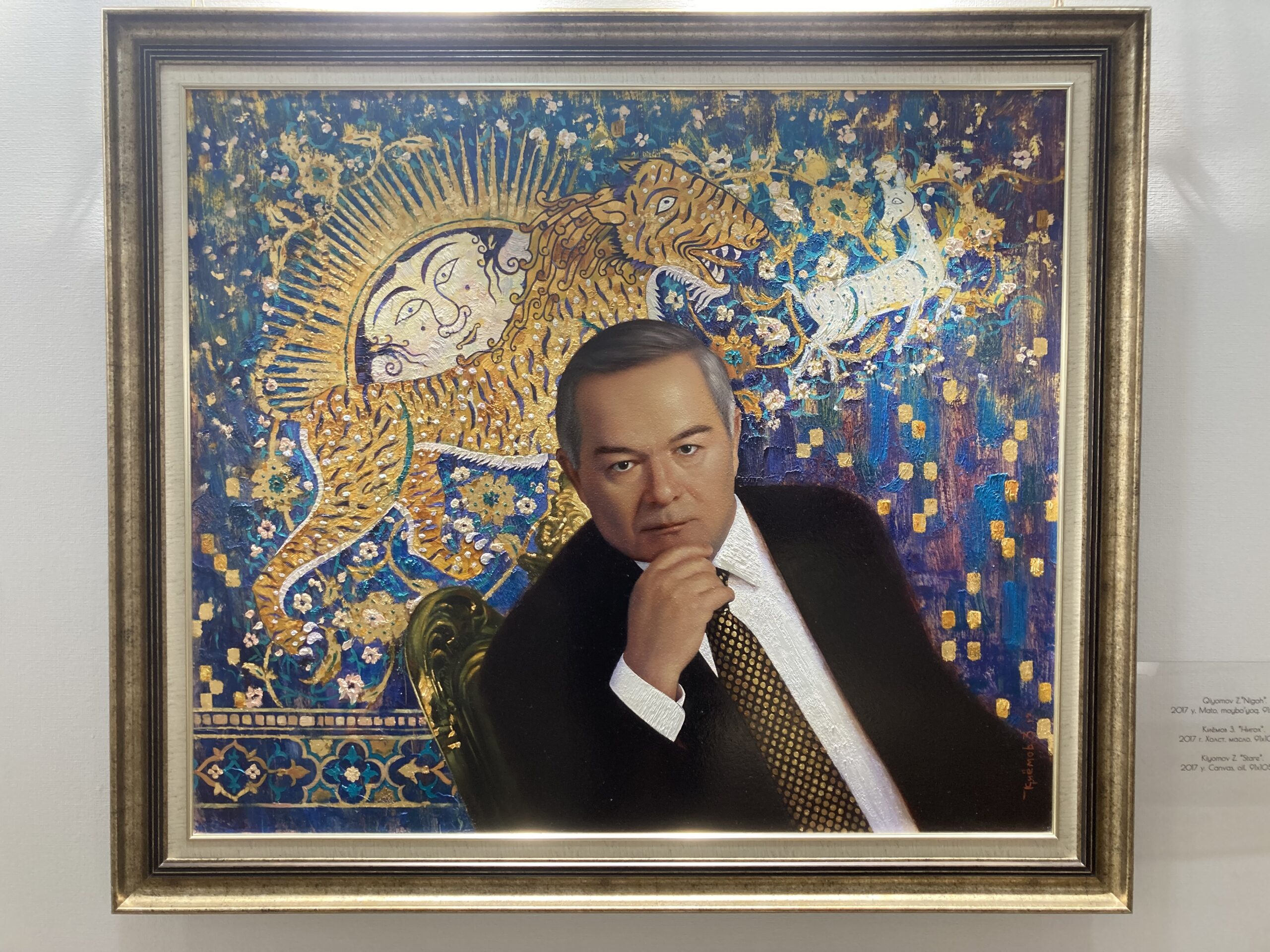
The second, and much bigger hall is dedicated to paintings of Karimov, as well as the gifts and honours he received from around other countries. This part was just amazing, trippy even. Half the paintings depicted him holding a young Uzbek girl with a traditional headdress, which is just a tad too much if you ask me… I mean, most locals I met say the country was not that different than Turkmenistan just a few years ago, when Karimov was in charge, so I find it hard to believe that all was well and everyone lived cheerfully back then, but perhaps I am just wrong and uncultured.
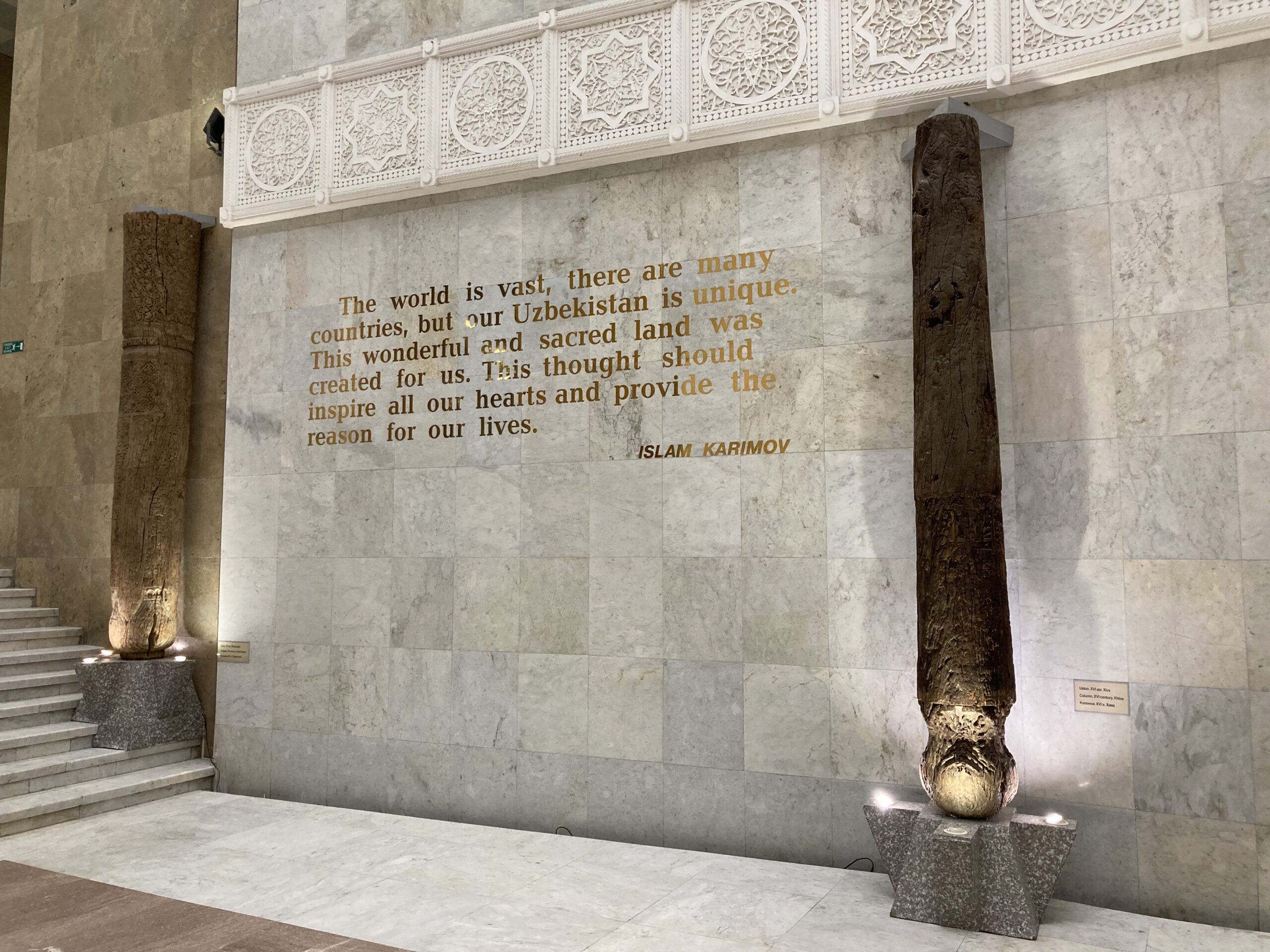
Karimov does not just have a museum of himself, but he also made it to the central halls of most museums around the country, with his wise words used generously around many exhibition halls. I am not sure if it is the translation, but it seems like he once spoke a bit too dramatically, for a president of a country that is.
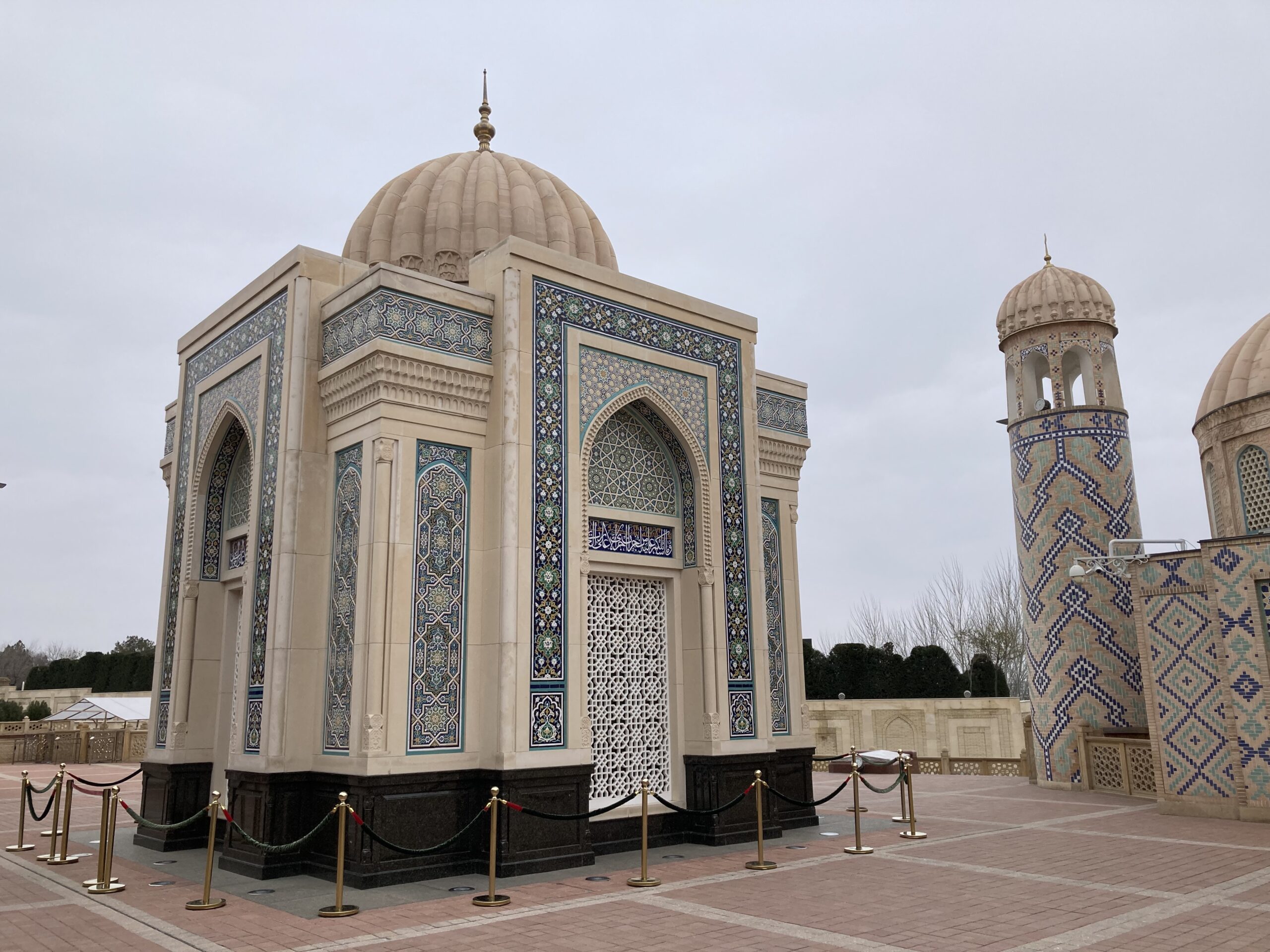
Museums are not the only way Karimov preserves his presence in the country, he actually has a mausoleum of his own as well. And where do you think it may be? Tashkent, where he died, or Samarkand, where he was born? It is the latter, in the same city Tamerlane is laid to rest. Suffice to say it does not receive anywhere near the number of visitors Timur gets, and it is pretty funny to see how at least four police officers seemed to patrol around this tiny structure, whereas Timur gets just a single security officer… You can make up your own mind about why that may be the case.
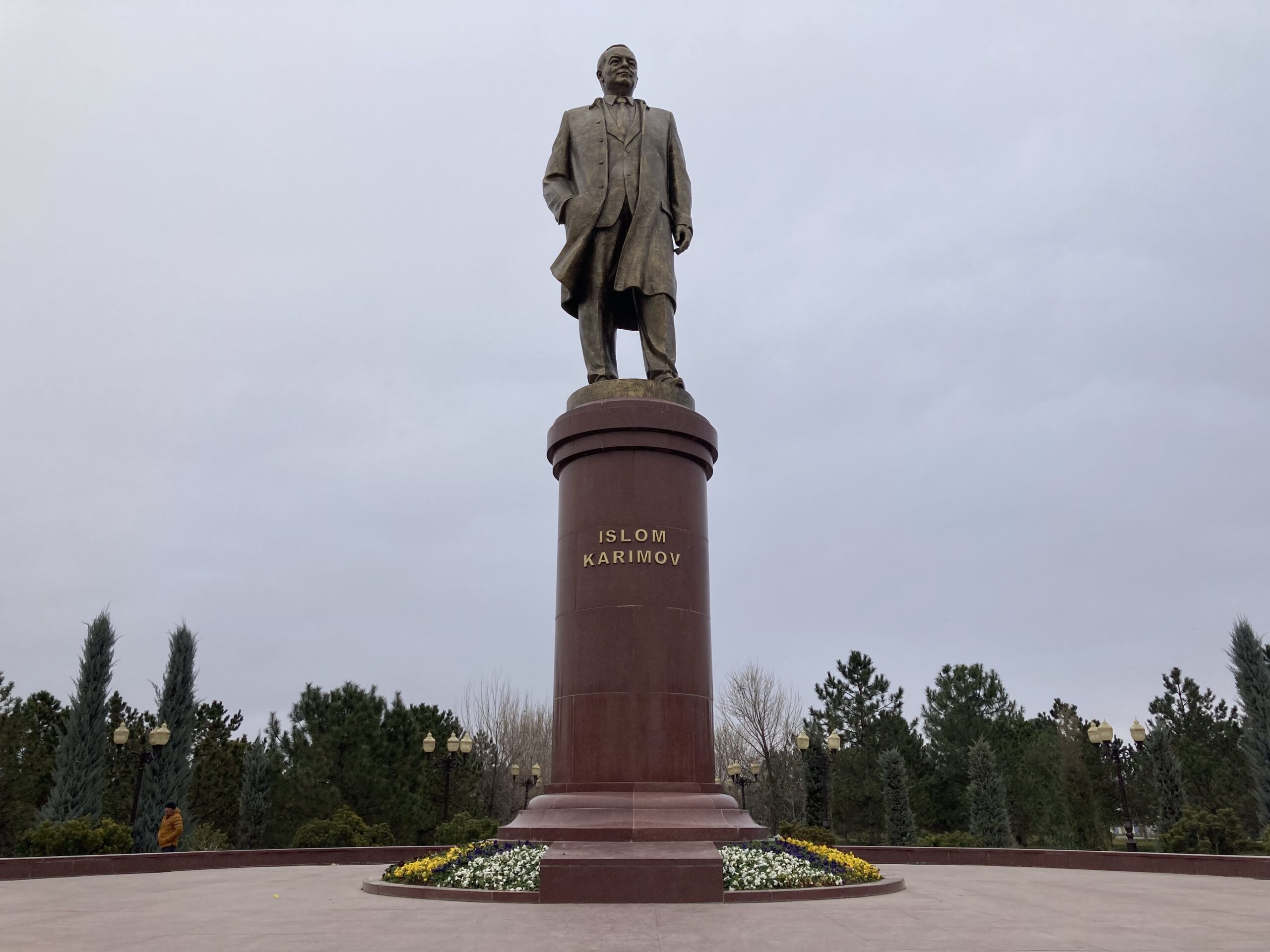
Ultimately, I do not think that there is that much of a debate when it comes to who is more favoured among Uzbeks today in between Tamerlane and Karimov, the former wins that race as far as I can see. Though I did see my fair share of people, especially the older generations, taking their photos in front of these Karimov statues around the country, the way people speak about Tamerlane is certainly affectionate and different, especially compared to how they try and avoid talking about Karimov. Though the letter certainly ruled the country with an iron fist for almost three decades, it seems like his fame (or infamy) is coming to an end sooner than expected. Perhaps, truly, the old king is dead, and that there is a new king. And perhaps, an ancient king rises above them all in plain sight. Someone more knowledgeable can answer this question better than I do, but these are interesting questions to wonder about, that much is certain.
